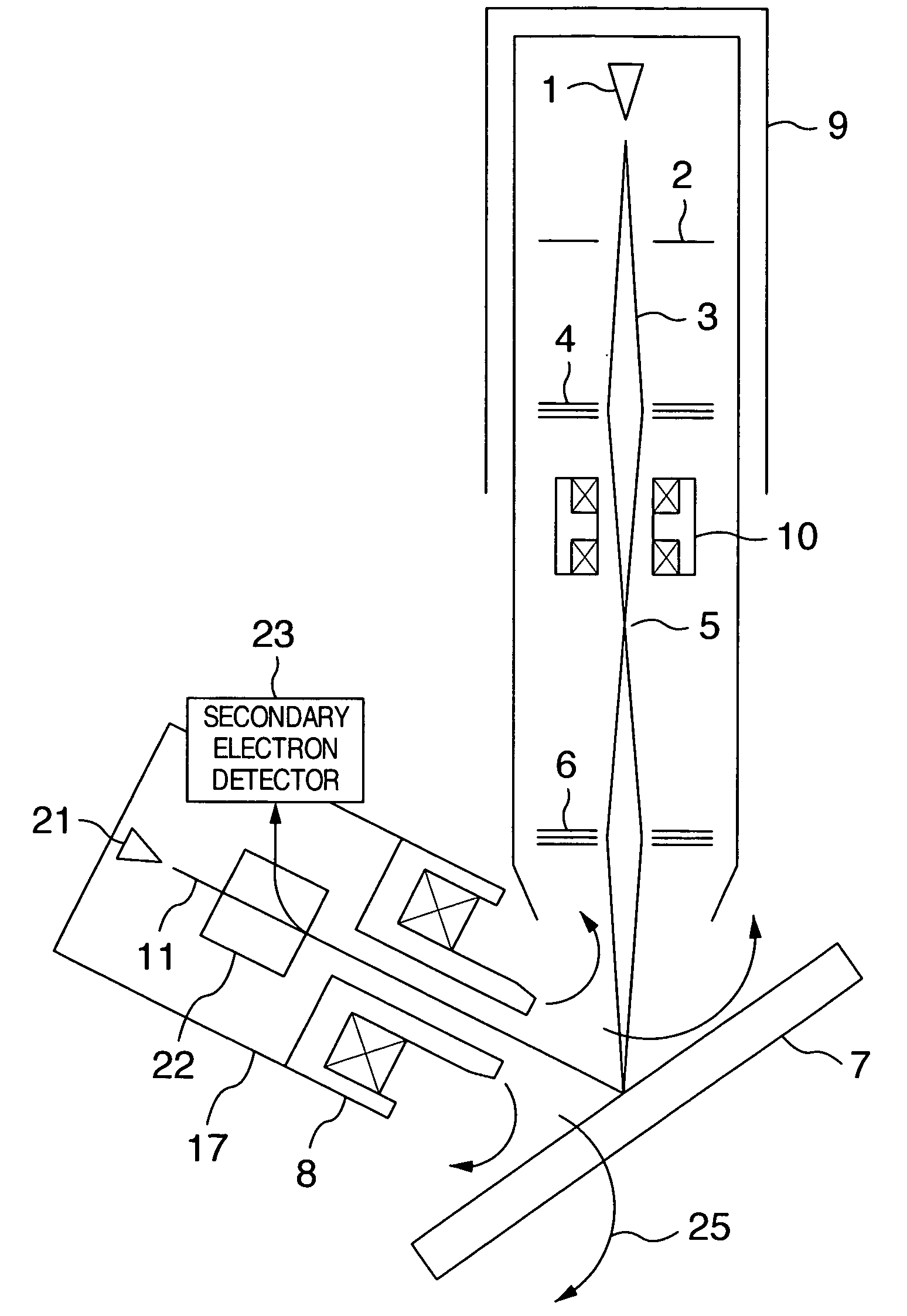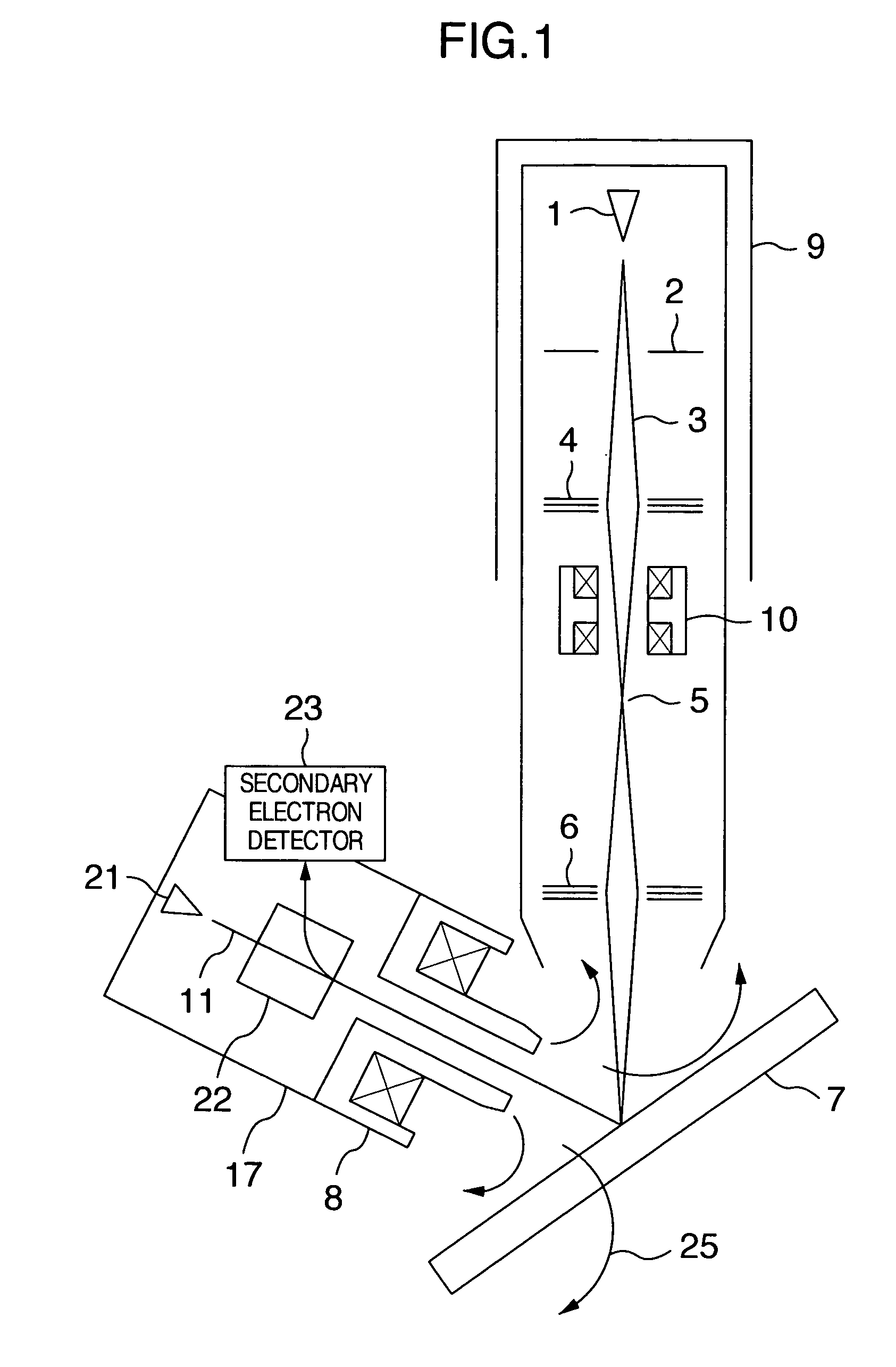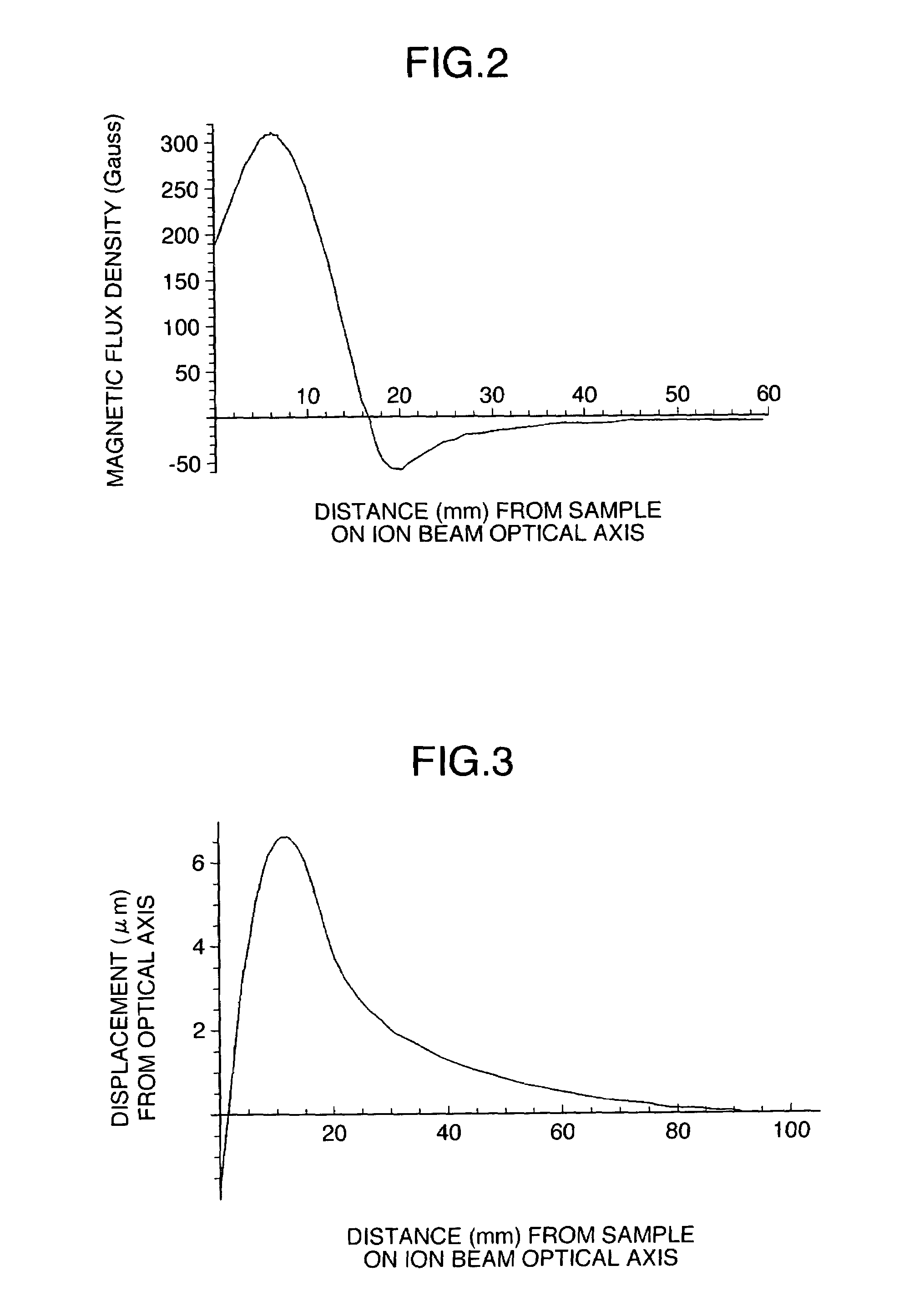Focused ion beam apparatus and focused ion beam irradiation method
a focused ion beam and beam technology, applied in the direction of beam deviation/focusing by electric/magnetic means, magnetic discharge control, instruments, etc., can solve the problems of difficult to magnetically shield a sample including its neighborhood completely, difficult to prevent the separation of isotopes at the same time, and beam split into two
- Summary
- Abstract
- Description
- Claims
- Application Information
AI Technical Summary
Benefits of technology
Problems solved by technology
Method used
Image
Examples
first embodiment
[0029]FIG. 1 is a schematic diagram showing an example of a configuration of a FIB-SEM according to the invention. The Ga ions released from a Ga liquid metal ion source 1 are accelerated by the electric field generated by an accelerating electrode 2 and formed into, for example, a Ga ion beam 3 having a kinetic energy of, say, 30 keV. The ion beam is focused at a crossover 5 by an electric condenser lens 4 (or without any cross over, focused into a substantially parallel state), and further focused on a sample 7 by an electric objective lens 6. The Ga ion beam 3 is composed of two types of isotopes, Ga69 and Ga71 having contents in the ratio of 6 to 4.
[0030]The secondary electrons generated from the sample 7 irradiated with the ion beam are detected by a detector not shown, and the image of the sample can thus be observed. A SEM 17 is used, however, for observing the image of the sample with high resolution. The electron beam 11 of the SEM 17 is generated from a cathode 21, and aft...
second embodiment
[0054]FIG. 8 is a schematic diagram showing another example of a configuration of the FIB-SEM according to the invention. Normally, the excitation of the objective lens 8 of the SEM 11 is required to be changed frequently to change the focal length or the accelerating voltage. In line with this, the magnitude of the magnetic field on the ion beam optical axis of the FIB apparatus is changed, with the result that the ion beam spot on the sample 7 is displaced and in proportion to this displacement, the isotopes are separated.
[0055]To solve the aforementioned problem, this embodiment includes a canceling magnetic field control unit 12. The canceling magnetic field control unit 12, upon receipt of a signal proportional to the exciting current of the SEM objective lens 8 from a SEM objective lens exciting current control unit 13, supplies the coil of the canceling magnetic field generator 10 with a current proportional to the particular signal. The displacement of the ion beam spot on t...
third embodiment
[0056]FIG. 9 is a schematic diagram showing another example of a configuration of the FIB-SEM according to the invention. In the case where an external magnetic field for deflecting the ion beam 3 exists in addition to the magnetic field generated by the SEM objective lens 8 and changes in magnitude, the actually existing magnetic fields are effectively measured. According to this embodiment, as shown in FIG. 9, an output of a magnetic field sensor 14 is input to the canceling magnetic field control unit 12. Although a Hall element is used as the magnetic field sensor 14 in this embodiment, any other element capable of measuring the magnetic field such as a magnetoresistive element can be used. In the case where no magnetic field is generated by the SEM objective lens 8, the canceling magnetic field control unit 12 supplies the coils of the canceling magnetic field generator 10 with a current proportional to the magnetic field measured by the magnetic field sensor 14.
[0057]Normally,...
PUM
 Login to View More
Login to View More Abstract
Description
Claims
Application Information
 Login to View More
Login to View More - R&D
- Intellectual Property
- Life Sciences
- Materials
- Tech Scout
- Unparalleled Data Quality
- Higher Quality Content
- 60% Fewer Hallucinations
Browse by: Latest US Patents, China's latest patents, Technical Efficacy Thesaurus, Application Domain, Technology Topic, Popular Technical Reports.
© 2025 PatSnap. All rights reserved.Legal|Privacy policy|Modern Slavery Act Transparency Statement|Sitemap|About US| Contact US: help@patsnap.com



